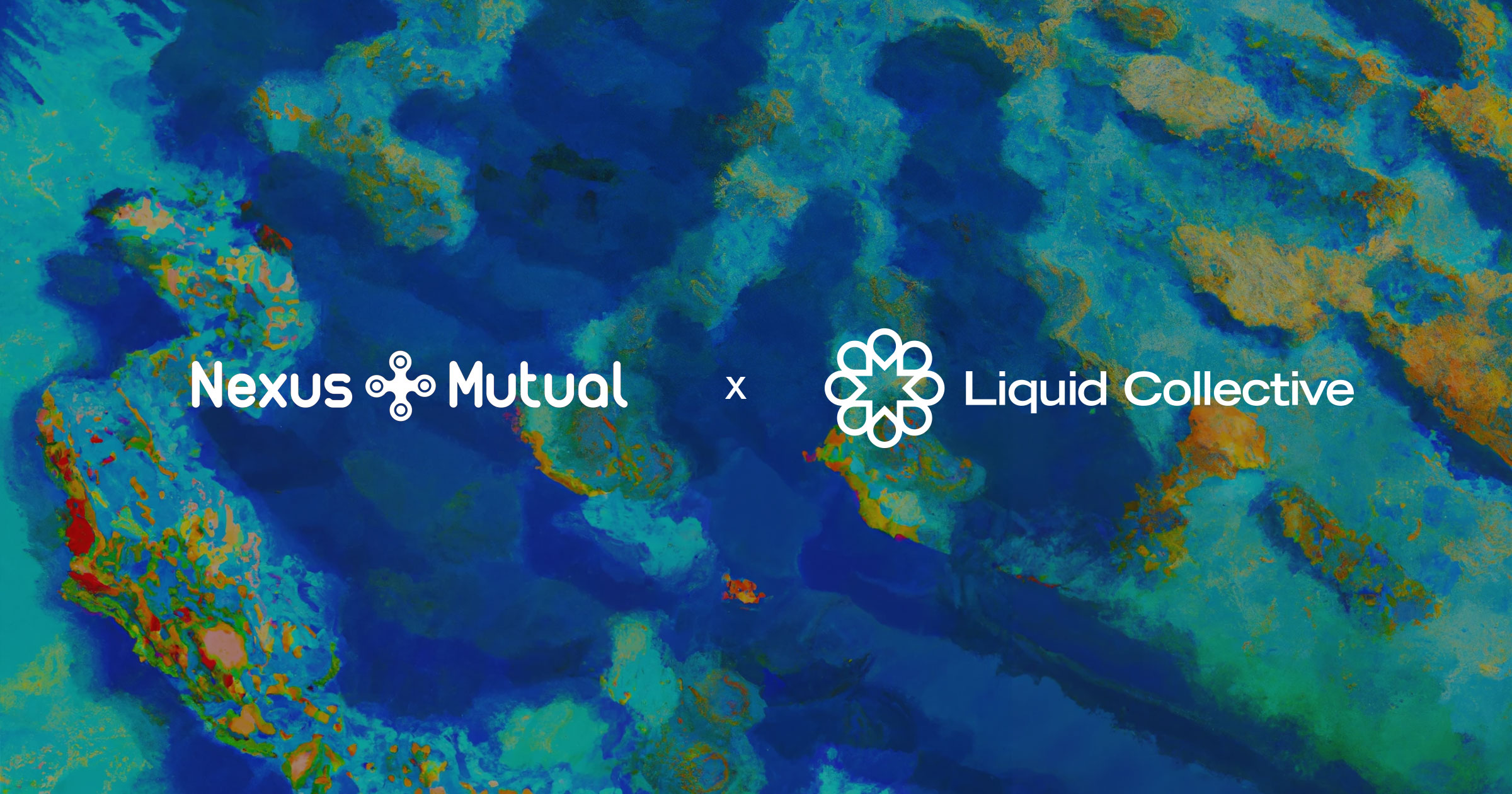Liquid Collective and Nexus Mutual Collaborate to Launch Comprehensive Slashing Coverage Program
Three layers of slashing coverage are available for every participant staking through the Liquid Collective protocol covering network-wide events, such as network outages, and node operator failures.

We're thrilled to announce the launch of Liquid Collective's Slashing Coverage Program in collaboration with Nexus Mutual, a prominent industry leader that provides decentralized crypto-native protection. Through this unique collaboration, Liquid Collective — the liquid staking protocol built and run by a collective of web3 teams like Coinbase, Kraken, Figment, and Kiln — is providing all of the protocol's participants with comprehensive slashing coverage through a multi-tiered program focused on protecting against slashing events.
What is the Liquid Collective Slashing Coverage Program?
Liquid Collective's innovative coverage program is designed to mitigate risks of slashing incidents from node operator's specific fault/inaction (e.g., downtime, double-signing) and network-wide events (e.g., client bug, natural disaster). The program will offer three layers of protection to all participants staking through the Liquid Collective protocol.
- Nexus Mutual Coverage: fully scalable cover that dynamically adjusts with the protocol's assets on platform (“AoP”) with umbrella coverage of up to 2.0 ETH per validator
- Slashing Coverage Treasury: representing a percentage of all network rewards allocated to slashing coverage deductibles on network-wide slashing incidents
- Node Operator Commitment: providing coverage for deductibles, up to a cap, against slashing incidents and missed rewards incurred due to the fault of node operators' infrastructure
Which slashable events are covered?
Slashing incidents may result from a node operator's specific fault/inaction as well as from network-wide events broadly (e.g., client bug, natural disaster). Liquid Collective's Slashing Coverage Program is designed to mitigate the risks of both types of incidents.
How does slashing coverage work in different scenarios?
Nexus Mutual provides dynamic umbrella coverage up to 2.0 ETH per validator, and the deductible is assigned between the Node Operator Commitment and the Slashing Coverage Treasury, depending on the cause of the incident. Deductibles will be paid by either the responsible node operator or the Slashing Coverage Treasury.
“Nexus Mutual's coverage dynamically adjusts the cover amount as more ETH is staked to reflect the change in risk. More validators mean more diversified risk, so we lower the cover per validator as Liquid Collective grows to provide the perfect balance between cost and coverage.”
Example 1. In the case of a network-wide slashable event, e.g., a client bug that leads to a 5 ETH loss across 5 active validators:
- Because this was a network-wide event, and did not result due to the fault/inaction of any specific node operator, deductibles towards the Nexus Mutual coverage are paid from the Slashing Coverage Treasury.
- Deductibles are calculated as a maximum of 0.25 ETH per affected validator. In this example, the Slashing Coverage Treasury would reimburse the protocol 1.25 ETH (5 validators x 0.25 ETH). The Nexus Mutual coverage reimburses the remaining loss, up to the coverage limit. In this case, 3.75 ETH (5 validators x 0.75 ETH).
Example 2. In the case of a node operator slashable event, e.g., a misconfiguration in validator infrastructure that leads to a 1 ETH loss for a single node operator:
- The node operator fulfills their Node Operator Commitment and posts a 0.25 ETH deductible, which is redeposited to the Liquid Collective protocol.
- The Nexus Mutual coverage reimburses the remaining loss, up to the coverage limit. In this case, 0.75 ETH (1 validator x 0.75 ETH).
In either case, when a deductible or claim is reimbursed, the reimbursed ETH is deposited to the protocol without minting LsETH. Another benefit of the cToken model is that users' LsETH is not slashed. Instead, the LsETH conversion rate programmatically adjusts to reflect the underlying ETH deposits (e.g., the LsETH conversion rate may weaken if a slashing incident occurs, but conversely strengthen when the protocol accepts a reimbursement deposit).
Why does slashing coverage matter?
With the rise of institutional participation in staking, slashing coverage is a risk mitigation consideration for enterprises and institutions. Liquid Collective's Slashing Coverage Program provides web3-native slashing coverage to every participant staking through the Liquid Collective protocol.
The bespoke coverage Nexus Mutual designed for Liquid Collective, alongside the Slashing Coverage Treasury and Node Operator Commitment, aims to address a significant risk for institutional staking participants, leading to greater adoption and growth of staking to secure proof of stake networks. Every participant staking through the Liquid Collective protocol will have comprehensive, web3-native, slashing coverage.
How does the Slashing Coverage Program fit Alluvial's vision?
Alluvial is focused on the overall growth and maturity of the ecosystem by bringing in more institutional participants to participate in proof of stake blockchains.
“By identifying and partnering with leaders in the ecosystem like Nexus Mutual, experts in decentralized coverage, we are finding creative ways to solve industry-wide problems to empower global participation in securing the decentralized internet.”
Where can I learn more?
- Read more about Liquid Collective's Slashing Coverage Program here liquidcollective.io/coverage-program/
- Nexus Mutual is fully transparent. Everything is onchain, which means all information can be accessed and audited at any time. Anyone can review the active coverage, capitalization levels, and other data and analytics in Nexus Tracker.
- Nexus Mutual is a decentralized insurance alternative built on the Ethereum blockchain. Their members protect more than $156.9m in productive assets and have paid out $8.45m in claims to date. Learn more about Nexus Mutual by visiting nexusmutual.io.
Please note
Liquid staking via the Liquid Collective protocol and using LsETH involves significant risks. You should not enter into any transactions or otherwise engage with the protocol or LsETH unless you fully understand such risks and have independently determined that such transactions are appropriate for you.
Any discussion of the risks contained herein should not be considered to be a disclosure of all risks or a complete discussion of the risks that are mentioned. The material contained herein is not and should not be construed as financial, legal, regulatory, tax, or accounting advice.